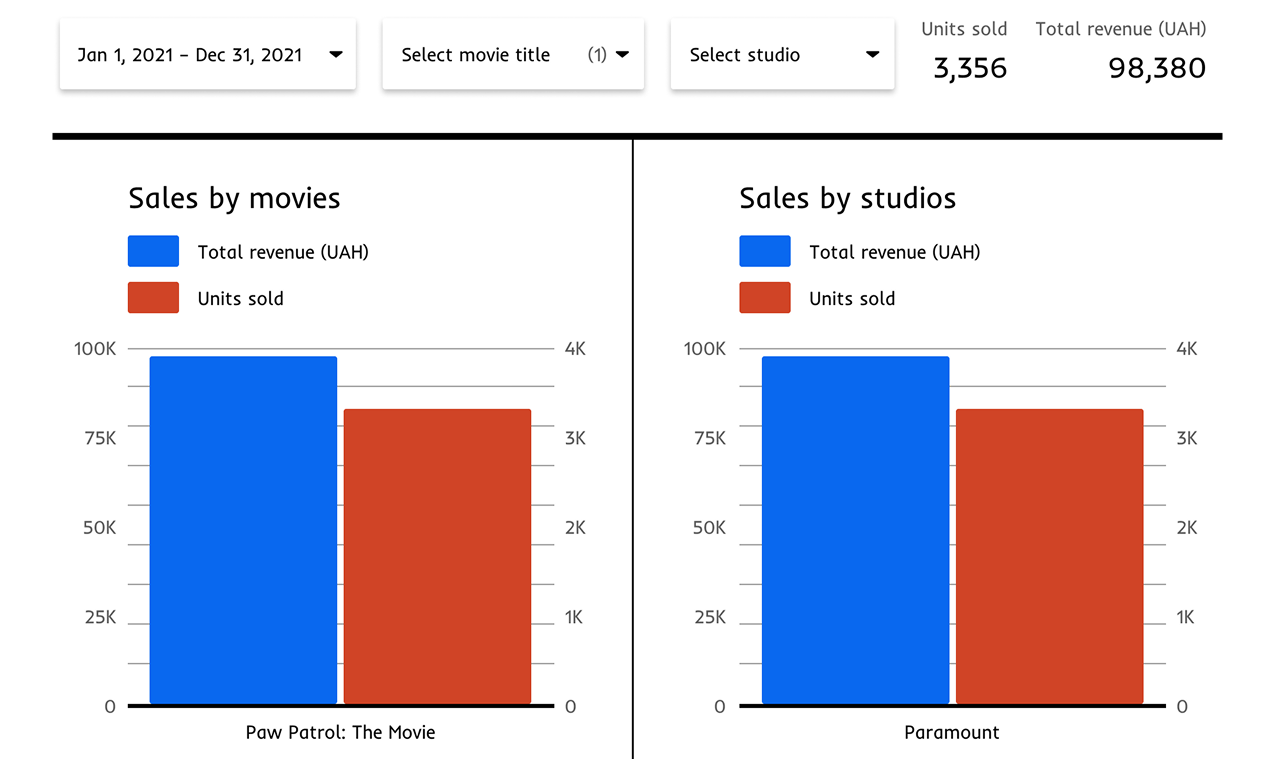Media
Cloud Migration and Reporting Automation for Media Streaming Company
Seamless transition of the BI system to the cloud, infrastructure costs optimization, and capacity scaling for a leading media streaming provider. Reporting automation tools transformed customer’s data analytics, offering real-time insights and enhancing decision-making capabilities.
Business Goals
Sweet TV, an online cinema platform, required a contemporary data management and analytics solution. The goal was to empower end-users with self-service analytics, reduce DBA workload, and create a cost-effective, scalable, and cloud-based data infrastructure.
Challenge
- Integrating data from a variety of on-premises sources into a centralized cloud-based data warehouse, considering variations in data formats and structures.
- Tracking changes in on-premises databases while maintaining data consistency in the cloud EDW.
- Designing auto scalable ETL workflows that can efficiently handle growing data volumes without bottlenecks or performance issues.
- Ensuring that end-users effectively utilize the BI dashboards.
- Continuously optimizing the performance of BI dashboards, data pipelines, and cloud data warehousing to meet evolving business needs.
Results
- 60% Lower Operational Costs
Previously, the operational costs were high due to manual reporting, associated human errors and resolutions, and complicated maintenance. Automated cloud BI dashboards drastically reduced manual labor involvement. As a result, the monthly cost of ownership dropped by 60%. - 100x Greater Scalability
The legacy semi-manual reporting approach was handicapped by a number of DBAs entering custom SQL queries, exporting results as Excel files , and sending them via email. capped at hardly suppor per month without slowdown. With efficient serverless infrastructure, the new billing platform scales up to 1,000,000 transactions per day, showing 100x scalability increase.- Empowering business users to configure interactive dashboards and independently access the required information through user-friendly controls, reducing the reliance on other departments.
- Freeing the DBA team from routine SQL tasks, allowing them to focus on optimizing on-premises data sources and enhancing data quality.
Implementation Details
- Data Integration Complexity
- Use ETL (Extract, Transform, Load) tools that support a wide range of data formats and provide data mapping capabilities.
- Develop data transformation scripts and processes to standardize and cleanse data from different sources before loading it into the cloud data warehouse.
- Ensuring Data Consistency
- Implement a robust change data capture mechanism to track and replicate changes from on-premises databases to the cloud DWH.
- Utilize data reconciliation and validation checks to ensure data consistency and accuracy.
- Scalability Issues
- Leverage cloud-native services that offer auto-scalability, such as serverless computing and managed data warehousing solutions.
- Implement data partitioning and clustering strategies to optimize query performance as data volumes grow.
- User Adoption of BI Dashboards
- Collaborated with users to create BI dashboards tailored to their needs and requirements.
- Offer user support and feedback mechanisms to address user queries and improve dashboard usability.
- Performance Optimization
- Regularly monitor BI dashboard and data pipeline performance, identifying and addressing performance bottlenecks.
- Utilize performance optimization techniques, such as query optimization and data caching, to enhance dashboard responsiveness.

Alex Gurbych
Chief Solutions Architect
Receive a professional and in-depth consultation from an experienced expert. Get tailored advice to address your specific needs and achieve your goals effectively.
